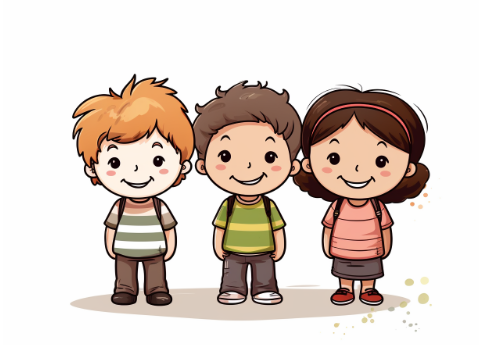There are no children who don’t love to draw, and it’s unlikely you can find parents who haven’t had to buy coloring books for their little ones. But, unfortunately, no one or almost no one pays attention to what hides behind the bright cover. And strangely enough, psychologists also don’t spend much time researching coloring books, or more precisely, what they imply.
If you have a printer, you can skip looking for coloring books in stores and instead download them for free from https://paintnarium.com/.
Coloring various pictures is not only interesting but also a very useful activity. Coloring pictures helps a child expand their knowledge of the environment, become familiar with colors and shapes, learn to color neatly (for this, you should first suggest to the child to color the element around the perimeter and only then color it entirely). Coloring books also help you introduce your child to the features of using colored pencils and paints, develop fine motor skills, which in turn makes the hand more flexible, ultimately helping the child when they start learning to write. Working with paints and colored pencils helps little ones develop their sense of color, practice their fine motor skills, and gain experience in understanding perspective. Coloring books introduce children to the art of painting. In the process of coloring, visual and kinesthetic channels of information processing are activated, and interhemispheric interaction is developed. And, of course, the child experiences a lot of positive emotions.
Coloring books teach children how to reduce the range of motion when drawing – when toddlers draw, they often don’t pay much attention to the boundaries of the page and its pictures, lines sometimes extend partially or even entirely onto other books, the table, or your expensive wallpaper.
Coloring books help children understand the regularities of the world and express their own color discoveries. If your little one colors an elephant in orange or pink, don’t scold them. Most likely, your little genius has their own ideas about it; it’s better to ask them why they chose those colors (besides, this can help identify color blindness at an early age).
Offer your child a coloring book at around one and a half years old, but choose ones specifically designed for them, where they can draw with their own hands, not with pencils or brushes. And don’t forget to buy water-based paints. For the child, this should be not only a developmental activity but also a game. Dip your finger in paint together with the child and let them try to stay within the contours of the drawing. Comment on everything you do, for example, “Let’s color this round ball yellow.” And make sure your little artist doesn’t go beyond the edges. In this way, through coloring, the child will become acquainted with colors, shapes, and learn to be precise.
Just don’t force the child to do this activity if they are tired; let them do something else. Even better, if you could anticipate and stop drawing a little earlier than the child gets tired, they will eagerly look forward to the next session.
For coloring books for such young children, the drawings should be very simple and easy to understand. The objects depicted should be familiar to the child, such as a ball, a cube, an apple, a bunny, and so on. Each drawing should have a wide outline, approximately 1 centimeter. It will be difficult for an untrained hand to go beyond such a line. Moreover, this will hide the child’s mistakes and give them self-confidence. Also, pay attention to the outlines of the pictures; they should be without angles and complex curves.
It’s best to choose coloring books where the drawings are accompanied by text. This will help you pique your child’s interest in coloring through play.
During coloring, a toddler can let their imagination run wild and add some details to the pictures. For instance, they can embellish a toy with dashes or dots, add a leash to a dog, give a cheese to a bear, or draw reeds around a frog.
Around the age of 3-4, children enter the stage of their first protests and discoveries, as well as developing more advanced skills. They receive coveted colored pencils and start learning how to use them correctly.
Since the child is now more confident with a brush, you can give them colored pencils, and you’ll be able to see how much pleasure they derive from coloring pictures with them. Coloring book drawings are perceived as pre-existing images that lack a color solution. Therefore, toddlers do not freely draw like 2-3-year-olds; instead, they focus on coloring, staying within the provided contours, trying to replicate all the curves of the drawn object. The child is mature enough to learn how to hold pencils or brushes correctly. So, be sure to monitor this. It may cause some resistance from the child, but return the pencil to the correct position in their hand. If your little artist still doesn’t like it, go back to finger painting. Soon, they will want to pick up the pencils again themselves.
For coloring with pencils, start by giving the child simple coloring books with large drawings. Once they’ve mastered those, move on to their favorite fairy tale characters.
From the age of four, it’s time to actively prepare for school. So, choose pictures that are appropriate for this stage. They should be more intricate in terms of drawing and texture.
Try to use educational coloring pages, such as those where the child needs to connect the dots marked with numbers.
Such tasks help develop a child’s patience and attentiveness and can also teach them counting. There are coloring book mazes that enhance logical thinking, while coloring pages with accompanying text can stimulate a child’s interest in learning to read.
Coloring pages where children have to not just color the pictures but also hatch, draw vertical, horizontal, and diagonal lines are excellent for developing writing skills. If a child learns to draw lines and different shapes, they won’t encounter any problems with written assignments in school.
Coloring books are also suitable for younger school children, and according to psychologists, they serve as a kind of “anti-stress” activity. By coloring pictures, a child can distract themselves from their lessons and immerse themselves in the “world of childhood,” helping them gather their thoughts and relax. This is essential because school represents a new environment, numerous new acquaintances, and thus, stress.
Some psychologists even claim that coloring books can help adults in a similar way. This is explained by the fact that during drawing, a person expresses all their emotions on paper through colors. But the interesting question is whether there is a reverse reaction? For example, if an artist pours out their inner aggression through sharp, nervous lines, will a child then look at and replicate the same forms? Will this somehow affect the child’s mood? Most likely, it will.
Therefore, when choosing a coloring page for your young artist, pay special attention to this aspect. To be sure that you are purchasing something that will truly help your child develop rather than hinder them, conduct a little test. First, find a coloring book where objects are drawn with thick lines, have at least an approximately round shape, and observe your feelings. Then, for some time, look at a zigzag-like, thin line, and once again, track your reaction. In the first scenario, you won’t feel any changes. In the second case, some tension may arise that needs to be released somewhere. How a child will react is unknown. Perhaps, it will manifest on paper with sharp pencil strokes, but it could also affect those around them in a negative way.
In stores today, there is such a variety of coloring books—bright and beautiful. Unfortunately, it’s not always possible to add to this list of qualities that are also beneficial for children’s development. Manufacturers don’t always seem to consider this aspect. So, before you purchase a coloring page for your little one, analyze whether it meets the following criteria:
- The page should feature one large main drawing and one or two smaller additional ones. The key is that the drawing should not be overloaded with details, as having numerous small objects can distract a child’s attention and make it difficult for them to concentrate.
- All the images should be interesting to the child, not scary, cute, and familiar to them.
- The outlines of the pictures should be smooth, without sharp angles and complex curves.
- The outline should be thick, not only for the child to understand where to color but also to hide their mistakes. It should also be without sharp angles and jagged lines.
- The coloring format should match the child’s age so that the child doesn’t spend half an hour coloring one item, as they may lose interest without achieving the desired result.
- It would be more practical if the coloring book included a color example to guide the child on which pencils to use.
Now you know what to pay special attention to in order to ensure that a seemingly harmless coloring page does not harm your little one. Additionally, it is clear that these simple pictures can help develop intelligence and fine motor skills. This method can engage even the most active and restless child. So, choose wisely, and you won’t go wrong!
Keep an eye for more news & updates on Gossips!




